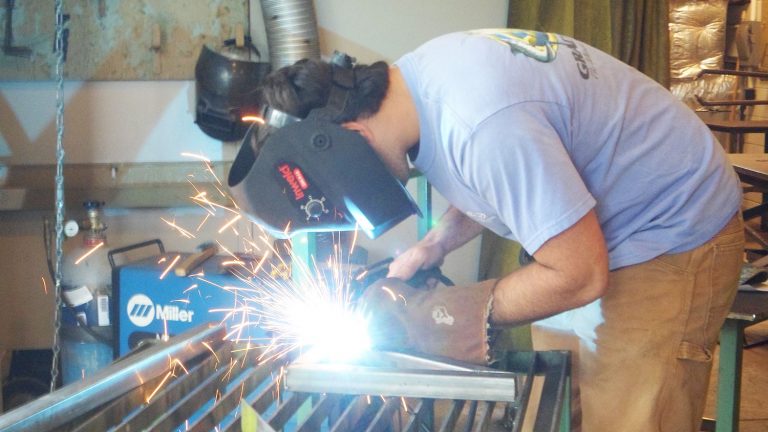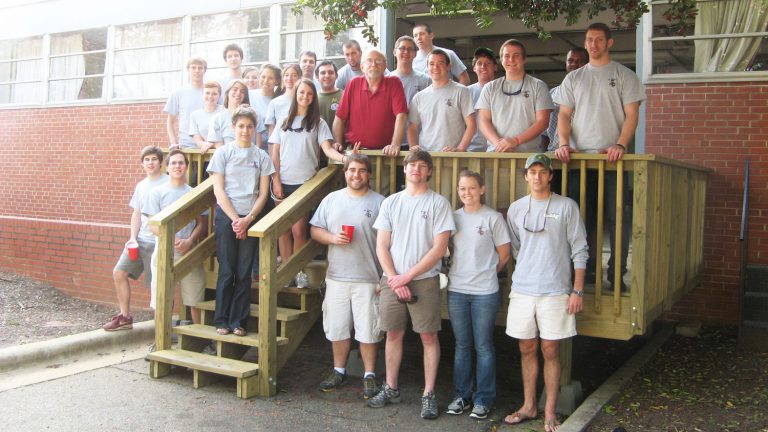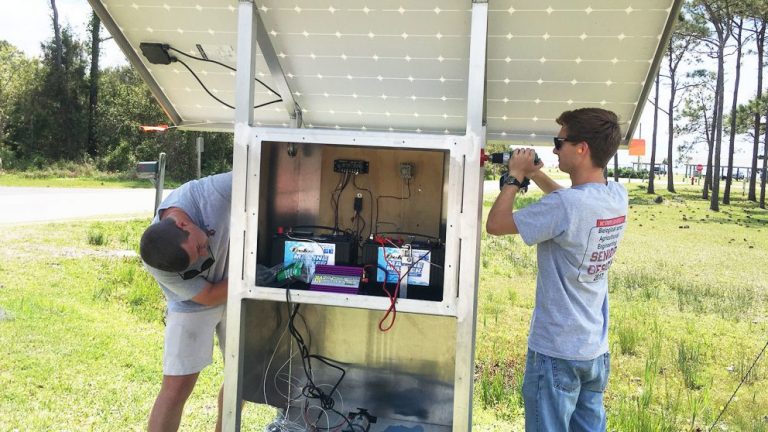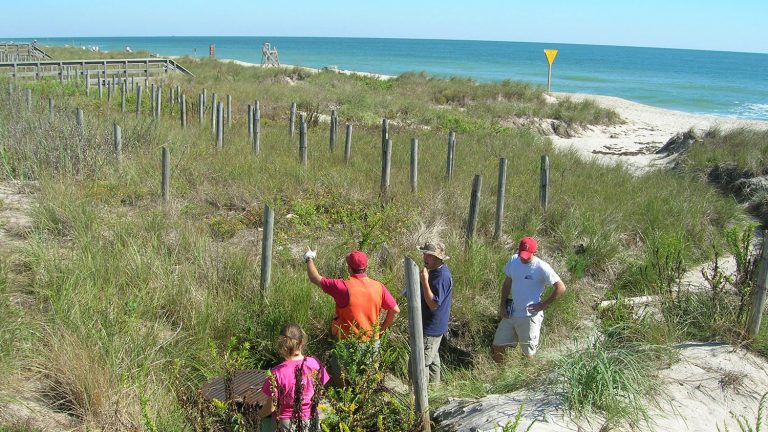By Suzanne Stanard
The idea behind the Senior Design Program is simple: Learn by doing.
That concept has driven the Department of Biological and Agricultural Engineering (BAE) program for more than 50 years – and has produced results that have benefited industry, local government and communities across the state.
“Our students come in and they learn a lot of technology, and that’s good,” says Mike Boyette, Philip Morris Professor of Biological and Agricultural Engineering, who has led the program since 2001. “But they also need to know how to apply it. That’s critical.”
A requirement for all graduating seniors, the Senior Design Program kicks off in the fall semester and runs through the spring. The students work independently, forming their own teams, choosing their projects, sourcing materials and building solutions. While they’re responsible for “100 percent of the work,” as Boyette says, they can lean on faculty mentors for help.
“In class, they’re generally given close-ended problems that have one answer,” Boyette says. “In the real world, it’s not quite that easy. In this program, we give them open-ended problems, that would have many possible solutions – or no solution at all.”
Boyette and Mari Chinn, who has helped lead the Senior Design Program since 2015, solicit projects from faculty members and industry, then develop a list from which the students make their choices.
“We try to cover all of the concentration areas we have in the department,” Chinn says. “Many of the students gravitate toward their areas of interest, but others try something new. Choosing problems outside their concentrations increases the breadth of their design solutions.”
Historically, faculty who develop projects will fund them, Boyette says. The department also offers resources so that each team has a working budget of about $1,000. And the students are encouraged to pursue undergraduate research grants.
In the fall, Senior Design students take a three-hour course twice a week, with a three-hour lab for group meetings time. After winter break they roll up their sleeves and start the hard work. The students also take courses on soft skills like professional etiquette and marketing.
At the end of the year, the students make formal presentations – having rehearsed with Boyette and Chinn no fewer than six times – to an assembly of faculty and project sponsors.

Success looks different for each team – and doesn’t necessarily mean their projects worked.
“It’s real life. They get a real-world perspective of how they can manage the information they’ve been given over the last three to four years and put it into practice,” Chinn says. “Some of the students learn what it means to fail and what they thought was going to be right ended up not being right. But that’s important. They can fail in a safe space. They still get graded for their effort.”
Kristen Navaroli, whose team constructed a solar-powered pump station to restore a wetland on Harkers Island, North Carolina, says the Senior Design Program is invaluable.
“This is the first step to real-world experience,” she says. “The projects aren’t textbook problems; they are real-world problems that need to be solved, and we are acting as the consultants trying to solve them.”
BAE grad Kris Bass, principal of Kris Bass Engineering, sponsored Navaroli’s team’s project.
“Working with the BAE Senior Design Program gives me an opportunity to stay in touch with the department and give back as an alumnus,” he says. “BAE seniors have special skills that were particularly useful on this innovative project. The team brought together a combination of ecology, hydrology and electrical/mechanical expertise and enthusiasm that was needed to make the project a really special one.

“The Senior Design Program is the perfect capstone coursework for engineering students,” Bass says. “It helps them bring together the skills they have learned and put them into practice in a supportive environment. The experience they gain with these projects is the best school preparation they can get for their future careers.”
This post was originally published in College of Agriculture and Life Sciences News.



